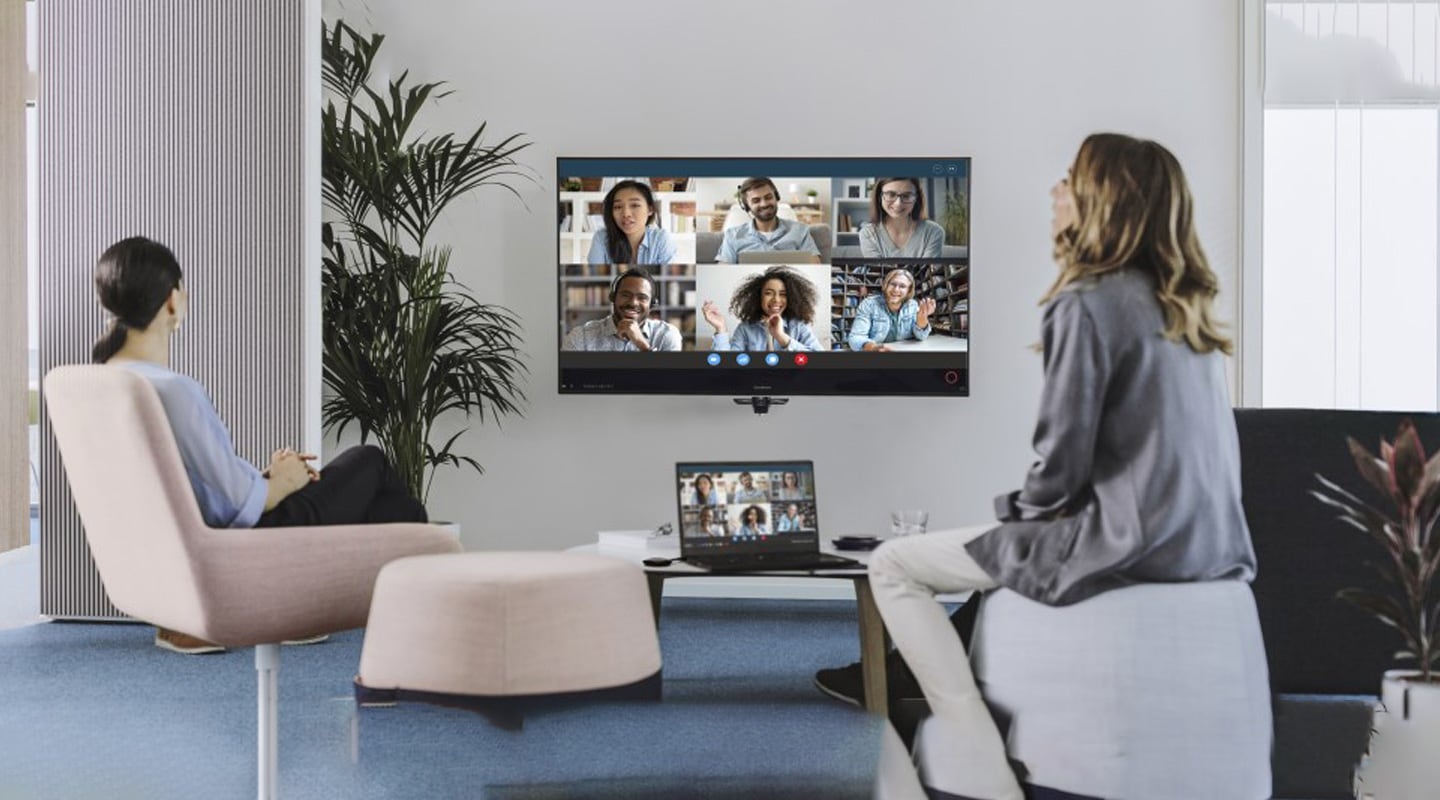
Hybrid Meetings & Post Pandemic Office Design
What are hybrid meetings? Why should you prepare your offices for them?
Hybrid, we use the term for many things these days. In biology, chemistry, engineering and even in the arts. We drive around with hybrid cars or bikes. And more recently, we have started to work and meet in a hybrid way. Before we get lost in the many interpretations of hybrid, let’s explore what hybrid meeting actually is. Because when it comes to equipping the workplace for hybrid meetings, there’s only one way forward, as the new research on hybrid meetings unravels.
The definition of a hybrid meeting: “A hybrid meeting is a meeting where a part of the audience joins from the office and another part joins remote, enabled by audio and video conferencing technology with a strong focus on content sharing.”
MORE THAN VIRTUAL
Don’t be mistaken. A hybrid meeting is more than just a synonym for a remote, or virtual meeting. In a hybrid meeting part of the participants joins live and in-person from an office meeting room and another part joins remote — so from home or another location, like a coffee shop, the airport or even a satellite office. Hybrid is a unique blend of both an in-room component and a virtual online component with live video streaming and online presentation of content. It combines the best features of both meeting types: in-person communication and virtual meeting benefits for information sharing, recording and interactivity.
In hybrid meetings the focus is on seamless collaboration and on content sharing both in-room and remote. The ultimate aim is to make hybrid meetings as intuitive and straightforward as face-to-face meetings thanks to meeting technology: SWAPS and AV peripherals, video conferencing platforms like Microsoft Teams, Zoom, Webex and wireless collaboration technology.
WHY HYBRID MEETINGS?
When businesses opt to enable hybrid meeting in the workplace, they have several reasons, often related to time constraints, reducing budgets and their carbon footprint. But mostly these companies realise they want to enable true collaboration and foster innovation even when not everyone is present in the office.
- True innovation and collaboration happens when people meet, in one and the same space. When everyone is stuck at home or remote, it’s hard for a company to thrive, innovate and progress. It’s clear that the meeting room will make a comeback to enable exactly those meetings where physical presence in a room is required. Hybrid meetings bring at least part of the workforce together physically and enable easier virtual collaboration with remote team members. It’s not exactly the same, but it’s the next best thing.
- Working with global project teams located all over the world and consequently in different time zones and working schedules, makes live meetings impossible.
- The introduction of efficient, low-cost hybrid meetings in the new company culture are a great solution to tackle travel restrictions and answer the need for going green and improving sustainability.
- More recently, lockdowns and quarantine measures during the COVID-19 pandemic have forced people to look for new ways of collaborating like home office, and more recently, in some regions, a shift towards hybrid work which makes social distancing easier to organise.
“The huddle space might well be on its way out”
1 IN 4 MEETINGS TODAY ARE HYBRID
Today, over 50% of all meetings is fully remote, which is twice as many as last year. Taking local regulations for the COVID-19 pandemic in mind, many enterprises have gone for a full WFH policy wherever possible at the beginning of the crisis. Today some parts of the world are planning to get (and even getting) employees to return to the office in a mixed work model. So, it comes as no surprise that already 23% of meetings today are hybrid meetings. A number that is more than likely to go up in future, when restrictions are lifted and more normal work regimes can be taken up again. We’ll probably see a shift to a better balance of remote, face-to-face and hybrid meetings.
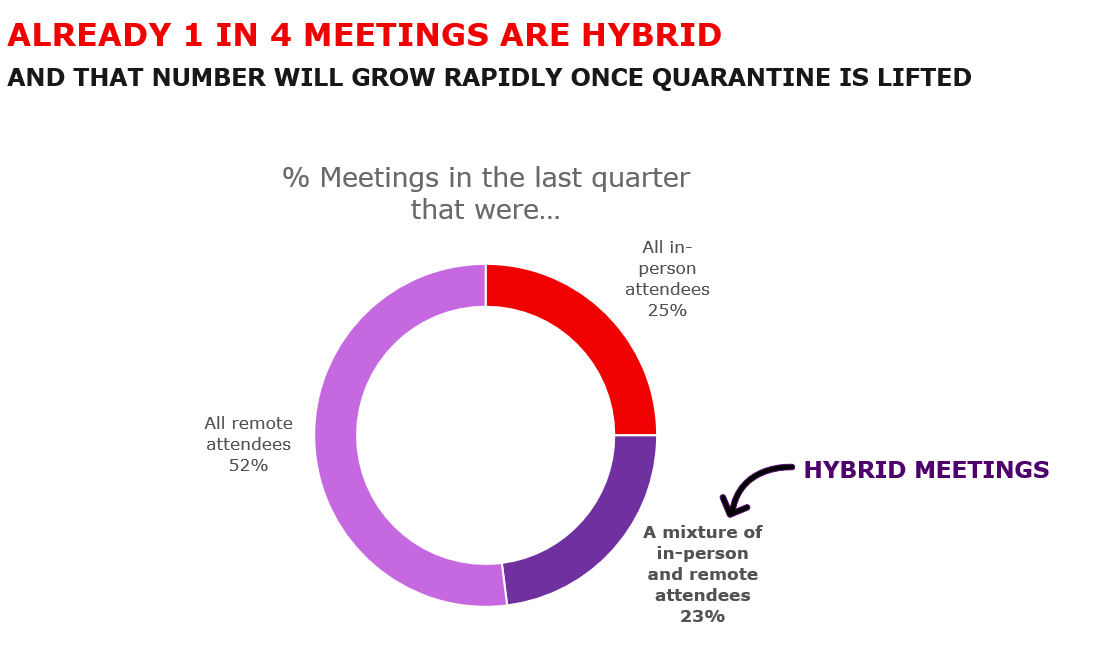
TOOLING UP FOR HYBRID MEETINGS
Post-Covid, meetings are expected to shift away from all-remote and more towards hybrid and face-to-face alternatives. This expected change will require a new company and meeting culture in many businesses and organisations in private and public sector. Some, especially more formal meetings really require physical presence in the room eg. the ones where important decisions are taken (42%), formal introductions are made (45%) or creative brainstorms are needed (40%). While other, more informal meetings like recurring team catch-ups or quick info-sharing sessions, trainings or presentations to a larger audience can easily be organised in a remote or hybrid way. These meetings require a pre-existing level of trust.
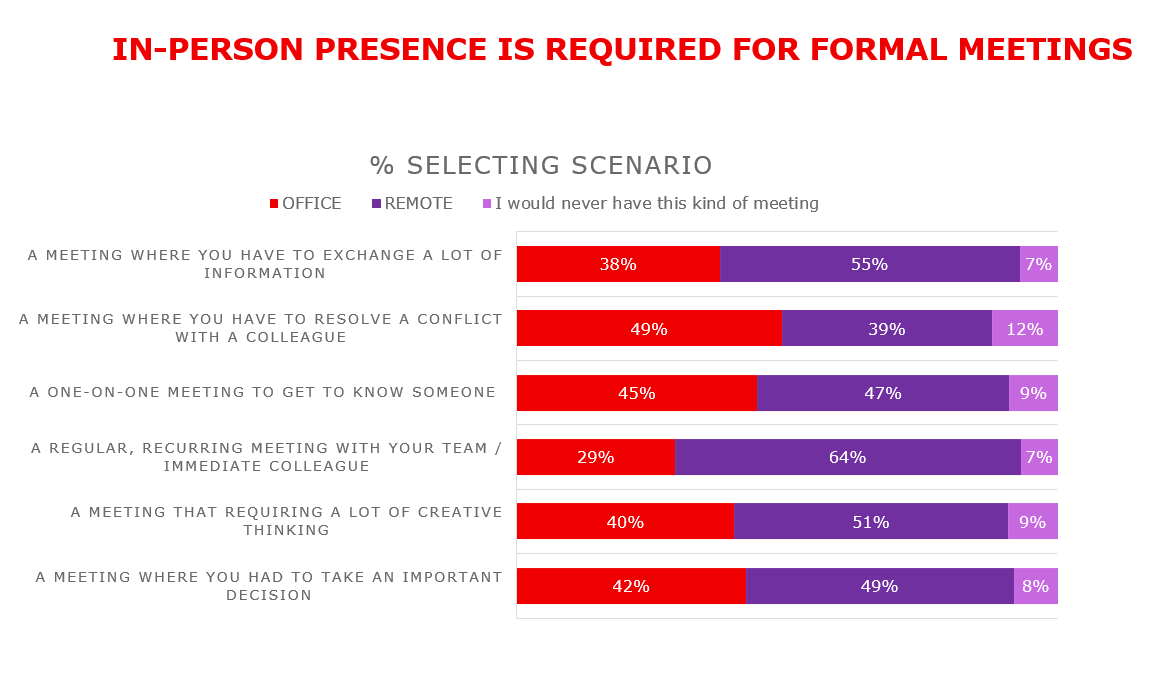
To facilitate this need for both face-to-face and hybrid meetings, offices will need some rethinking and redesigning. Especially when employers want to ensure rules for social distancing and restrict movement in busy areas at the same time. Workers want more structured, planned in-person meetings and consequently more closed and formal meeting spaces that enables video meeting. Larger meeting rooms are preferred, no new investments in huddle spaces where spontaneous, ad hoc meeting takes place, are advised.
The huddle space might well be on its way out.
Even in workstation design we see this trend popping up. Less regular desk space and open plan offices are necessary when people come to the workplace mainly to collaborate. More rooms to foster (hybrid) interaction, interactivity and connection are required. Offices will become smaller, more focused and predominantly used for in-person human collaboration.
Now is the time for companies to rethink their ideal office location. Is it in an energetic, big city where they can attract young talent? Or do they prefer smaller, flexible and easy accessible satellite offices outside of city centres?
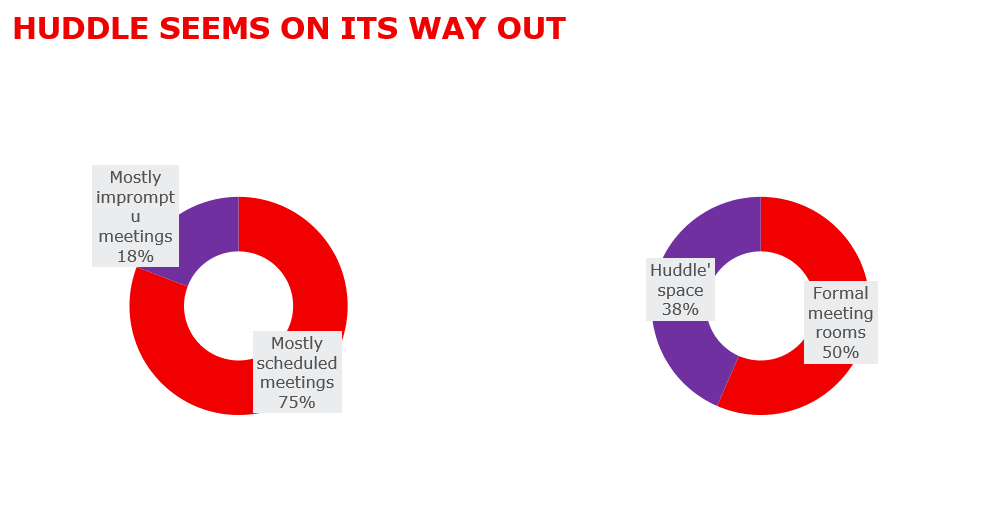
HUDDLE ON THE WAY OUT?
To equip the workplace for seamless hybrid meeting, investments in setup of video conferencing rooms and in better video conferencing technology are number 1 priority for organisations. Be it rolling out new or uniform UC platforms in the entire enterprise, equipping meeting spaces with AV equipment like cameras, mics, speakers, soundbars for good audio and video quality, investing in decent display and visualisation solutions or enabling wireless content sharing, collaboration and conferencing for more engagement. Turning a meeting room into hybrid meeting room can be done in just a few, simple steps.
“Technology will be crucial to achieving this blend. The message comes through loud and clear from our Hybrid meeting survey. Of all the things office workers want their companies to invest in, collaboration technologies are top of the list. To survive, rebuild and eventually thrive again in the post-pandemic world, businesses will need to invest in new technologies, redesign or at least reconfigure their office spaces, and give their employees the tools they need to work in the best way possible, no matter where they are located or how they choose to connect.”
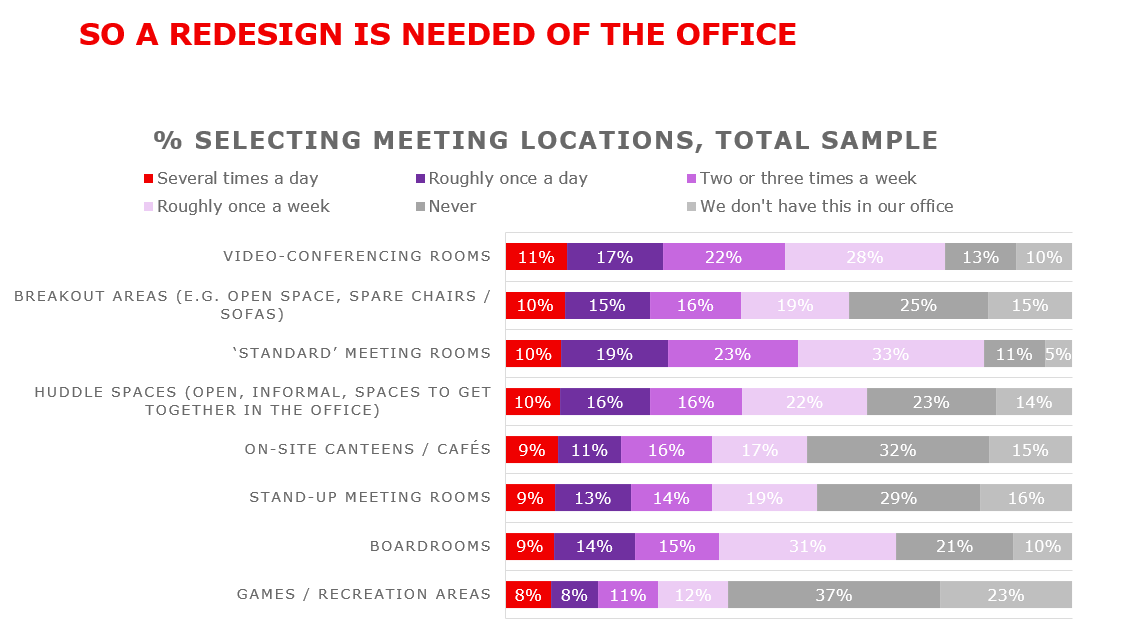















RESPONSES